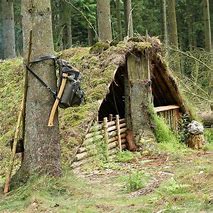
Unleashing the Wilderness Warrior: A Guide to the Art of Bushcraft
Share
In a world captivated by modern conveniences, the age-old art of bushcraft stands as a testament to humanity's primal connection with nature. Rooted in self-reliance and resourcefulness, bushcraft is a set of skills that empowers individuals to thrive in the great outdoors, using nature's resources to meet their basic needs. In this article, we'll explore the essence of bushcraft, its key principles, and how it fosters a deep connection with the wilderness.
Understanding Bushcraft:
At its core, bushcraft is the skillful use of nature's resources to survive and thrive in the wild. Unlike survivalism, which focuses on short-term strategies for immediate rescue, bushcraft is a long-term approach that emphasizes sustainable living in harmony with the environment. It encompasses a wide range of skills, from fire-craft and shelter-building to foraging, tracking, and navigation.
The Seven Pillars of Bushcraft:
Bushcraft is built upon a foundation of seven essential skills, often referred to as the "Seven Pillars." These pillars form the backbone of bushcraft proficiency:
a. Shelter: Mastering the art of building sturdy, weather-resistant shelters using natural materials.
b. Fire-craft: Acquiring the skills to start and maintain a fire under various conditions, a cornerstone of survival.
c. Water: Knowing how to find, purify, and safely consume water from natural sources.
d. Food: Understanding edible plants, foraging, hunting, fishing, and primitive cooking methods.
e. Tools: Crafting and using essential tools such as knives, axes, and cordage from available resources.
f. Navigation: Navigating through the wilderness using natural cues, maps, and basic orienteering.
g. Awareness: Developing a keen sense of situational awareness, tracking, and understanding animal behavior.
Building a Connection with Nature:
Bushcraft isn't just about acquiring practical skills; it's about fostering a profound connection with the natural world. By relying on the earth's resources for survival, practitioners develop a heightened awareness of their surroundings, learning to read the land, weather patterns, and the behavior of flora and fauna. This connection not only enhances one's outdoor capabilities but also deepens appreciation and respect for nature.
Minimalistic Approach:
In the spirit of simplicity, bushcraft encourages a minimalistic approach to outdoor living. By relying on fundamental skills and utilizing only what nature provides, practitioners can achieve a self-sufficient and sustainable lifestyle. This minimalist philosophy not only lightens the environmental impact but also cultivates a mindset of resourcefulness and adaptability.
Modern Applications of Bushcraft:
While bushcraft has ancient roots, its principles find relevance in the modern world. Beyond wilderness survival, the skills learned in bushcraft can be applied to various scenarios, from emergency preparedness to sustainable living practices. Many enthusiasts incorporate bushcraft techniques into their outdoor adventures, forging a deeper connection with the natural environment.
Conclusion:
Bushcraft is more than a set of survival skills; it's a philosophy that empowers individuals to live in harmony with nature. By embracing the Seven Pillars and cultivating a minimalist mindset, practitioners unlock the ability to not just survive but thrive in the wilderness. So, whether you're a seasoned outdoorsman or a curious beginner, consider delving into the art of bushcraft – a journey that reconnects us with our primal roots and the untamed beauty of the natural world.
